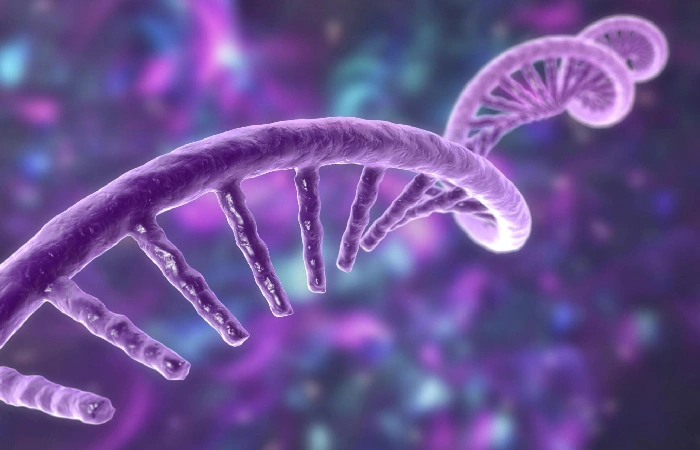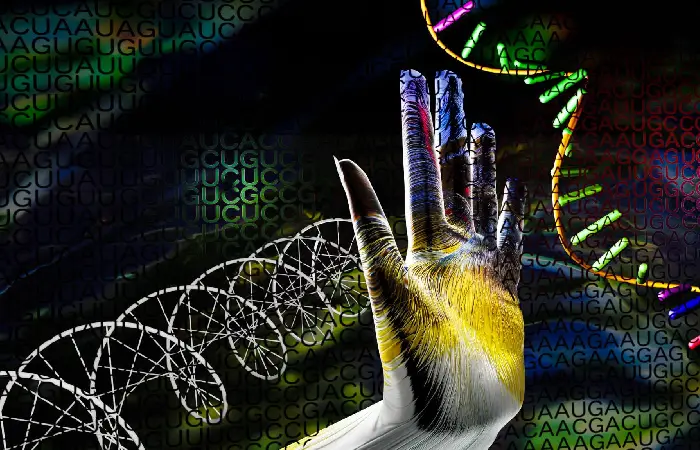Here is the introduction to the problem of the mRNA. The 12-nucleotide long piece of mRNA sequence “taccaggatcactttgcca” consists of a few abnormalities or issues that will affect its function and relocation into protein. The Messenger RNA (mRNA) is the intermediate between DNA and protein formation in the cell. Protein synthesis occurs when it carries genetic instructions from DNA to the ribosome.
For mRNA to be decoded appropriately, it must have a particular start codon near its 5′ end to signal the start of translation and standard nucleotide triplets called codons that encode for amino acids. However, upon initial examination, this given mRNA sequence lacks a start codon and contains multiple nucleotide substitutions that deviate from typical human codon usage tables. Such variations could prevent or impair the ribosome’s ability to efficiently translate this mRNA into the correct amino acid chain. Now, let us understand the basics of mRNA.
Table of Contents
What is mRNA?

Messenger RNA, or mRNA, is a single-stranded molecule that is transitional between DNA and protein synthesis in the cell. The DNA in the cell nuclei has the genetic blueprint, but proteins are synthesized in the cytoplasm. mRNA is produced through transcription of a DNA sequence and carries this genetic information from the nucleus to the cytoplasmic ribosomes, the sites of protein production.
During transcription, the mRNA copy is created from one of the DNA strands via complementary base pairing. The mRNA then binds to ribosomes, which “read” its sequence through triplet nucleic acid codes called codons that specify the 20 standard amino acids used to build proteins.
Each codon has a reading, and a corresponding transfer RNA delivers the correct amino acid. The amino acids are then linked through peptide bonding into polypeptide chains that fold into functional three-dimensional proteins. In this way, mRNA serves as the critical messenger to translate the genes in DNA into the proteins that carry out essential cellular functions.
The Sequence Of Mrna
The sequence of mRNA molecules is crucial for carrying out its role in protein synthesis. It begins with the 5′ end, which contains a modified guanine nucleotide cap that protects the mRNA from degradation.
Next comes the start codon, usually AUG, which signals to the ribosome where translation should begin. The body of the mRNA sequence then consists of multiple nucleotide triplets called codons, each specifying a particular amino acid. There are 64 possible codon combinations from the four RNA bases of adenine, cytosine, guanine, and uracil, though only 20 amino acids are encoded.
The codons are read in sets of three by transfer RNA molecules, which carry the corresponding amino acids. Finally, the mRNA sequence ends in a string of adenine residues called the poly-A tail at the 3′ end. This poly-A tail protects the mRNA from degradation and influences its transport and translation. Together, the unique components and ordered arrangement of nucleotides within the mRNA sequence ensure it can fulfill its role as a messenger to ferry genetic instructions for protein production.
Role of TACCAGGTCACCTTGCC
The nucleotide sequence TACCAGGTCACCTTGCC plays an essential role in the function and regulation of mRNA. This sequence encodes for a specific microRNA (miRNA) binding site within the 3′ untranslated region (3’UTR) of target messenger RNA (mRNA) transcripts.
miRNAs are short, non-coding RNA molecules that play essential roles in post-transcriptional regulation of gene expression. By binding to partially complementary sequences usually located in the 3’UTR of specific mRNAs, miRNAs can inhibit translation or promote degradation of those target transcripts.
The TACCAGGTCACCTTGCC sequence is a binding site for a specific miRNA that regulates the expression of the genes whose mRNA contains this complementary sequence in the 3’UTR. By binding here, this particular miRNA can influence the expression of those target genes at the post-transcriptional level through translational repression or transcript destabilization. It demonstrates the crucial role of specific miRNA binding sites, like TACCAGGTCACCTTGCC, in mRNA function and gene regulation via microRNAs.
What Is Removed During mRNA Processing?
Messenger RNA (mRNA) must undergo extensive processing after being transcribed from DNA but before it can be translated into protein. One of the critical steps involved in mRNA processing is the removal of non-coding intervening sequences known as introns. Eukaryotic genes are made of protein-coding regions called exons interrupted by introns.
During mRNA processing, the introns are cut down through splicing, and the exons join together. A large protein-RNA complex carries out this splicing reaction called the spliceosome. The spliceosome recognizes specific signals at each intron’s 5′ and 3′ ends and precisely cuts out the intron sequence, ligating the flanking exons.
This way, introns are removed from the initial precursor mRNA (pre-mRNA) transcript, resulting in a mature mRNA containing only the exonic portions that will code for the protein. Therefore, splicing is vital in generating a functional mRNA molecule by removing non-coding introns for protein translation.
The Nucleotide Sequence In mRNA Is Determined By

The precise nucleotide sequence present in mature messenger RNA (mRNA) molecules is determined by the sequence of nucleotides in the DNA from which that mRNA was transcribed. DNA contains the genetic code that directs all of the cell’s activities, including the production of proteins.
The DNA sequence is copied or transcribed into a preliminary mRNA molecule through the enzymatic transcription process. During transcription, the enzyme RNA polymerase reads the DNA sequence in the nuclear gene and synthesizes a complementary RNA copy that retains the same sequence order. This initial RNA transcript then undergoes processing to become a mature mRNA ready for export to the cytoplasm.
The nucleotide order in the DNA template is maintained through all of these processing steps, ensuring the final mRNA retains an identical sequence to the transcribed region of DNA. Ultimately, this specific mRNA sequence will direct protein synthesis by matching up to transfer RNAs during translation on the ribosome. Therefore, the DNA determines the mRNA sequence, which determines the amino acid sequence of proteins.
Conclusion
Several things can go wrong with mRNA, impacting its ability to direct proper protein synthesis. Mutations or errors in the DNA template sequence will carry over to the corresponding mRNA, resulting in changes to the encoded protein. Improper processing of pre-mRNA could leave introns in place or join exons in the wrong order.
Defects in mRNA transport out of the nucleus may prevent it from reaching ribosomes. Damage to the mRNA structure could interfere with the binding of translation factors. Premature termination or lack of a stop codon would produce truncated proteins. Inefficient or inaccurate translation could yield malformed proteins.
Degradation of mRNA before complete translation would leave proteins partial or unable to fold correctly. Any disruption to the delicate sequences, structures, or processes involved in mRNA metabolism can potentially introduce defects at the protein level with pathological consequences. Careful regulation is needed to ensure only functional mRNAs contribute to the proteome.
